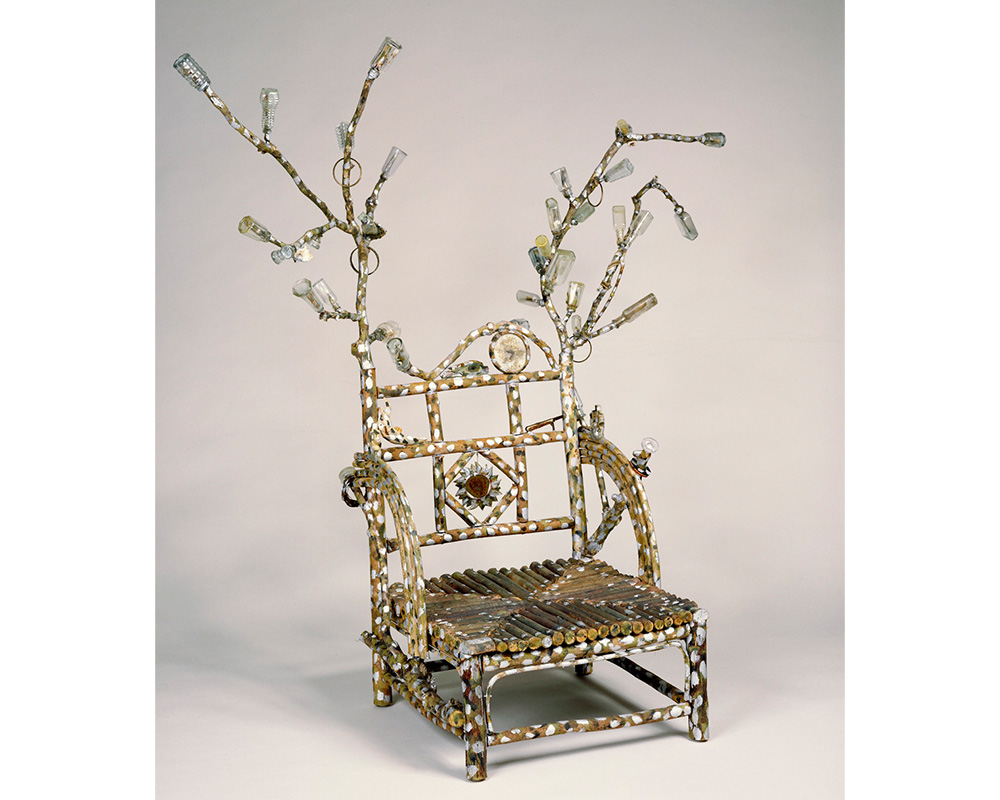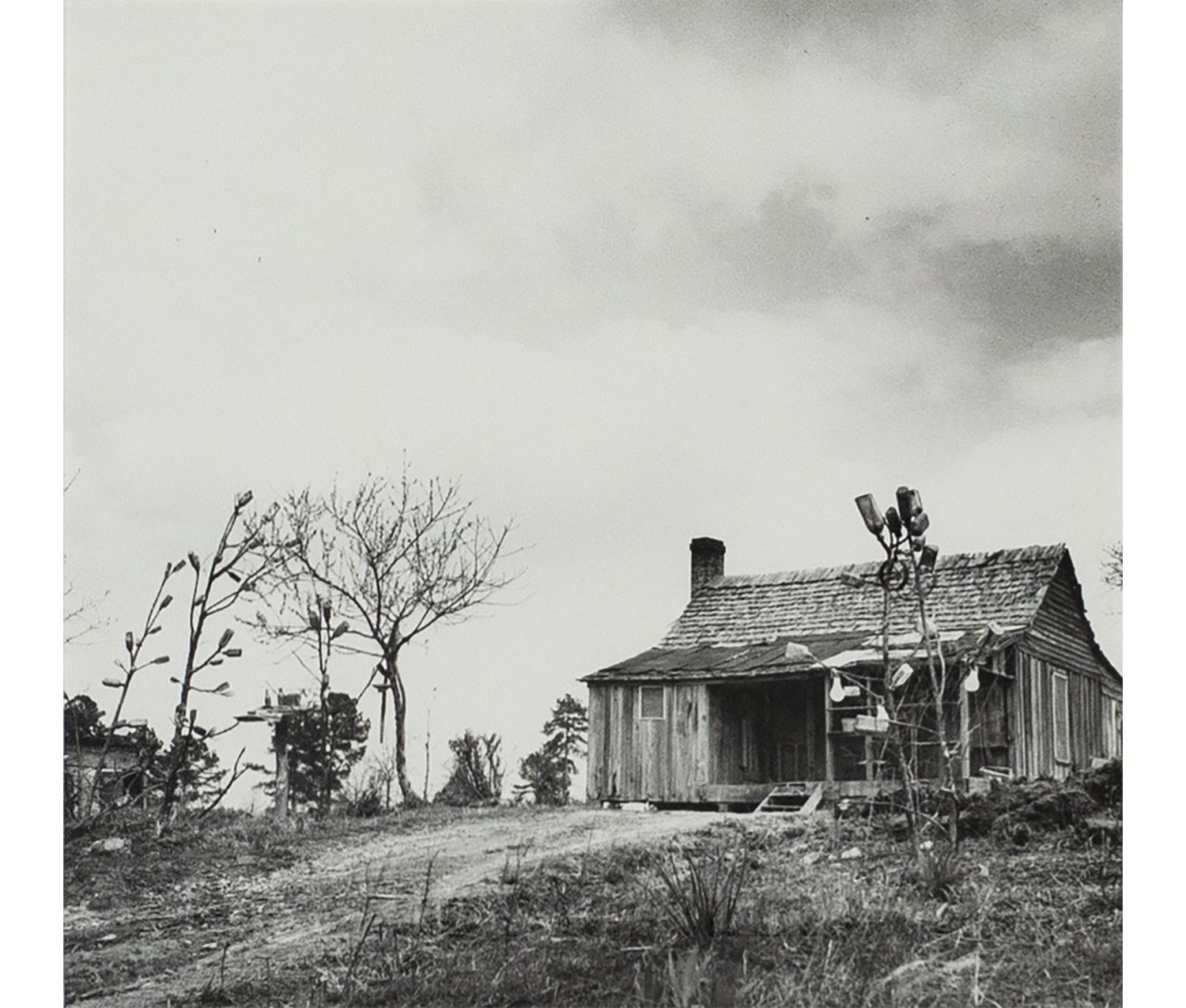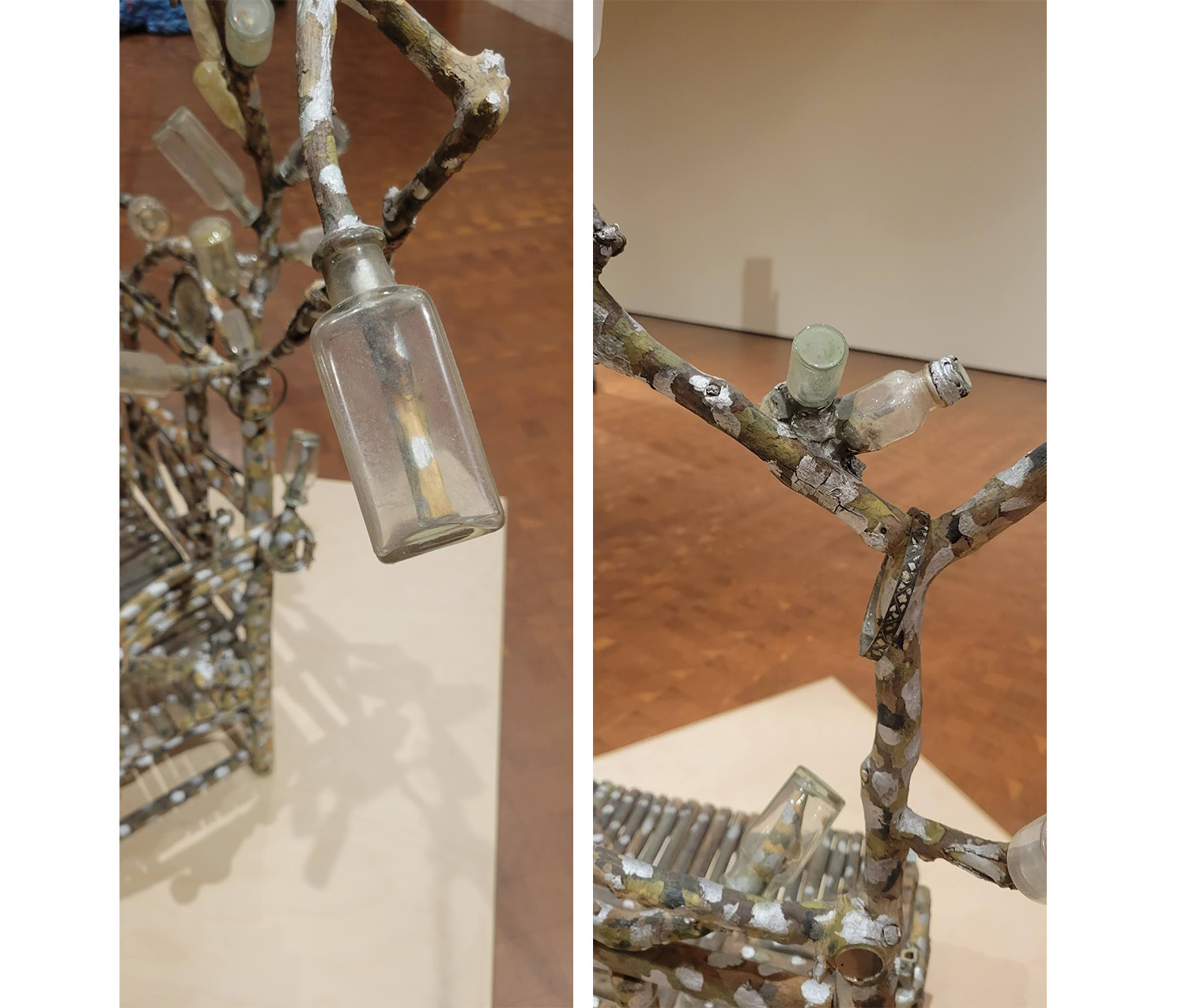
Who is Sitting in "Ancestral Spirit Chair"?
Brooklyn Quallen ’25 is a STRIDE scholar currently working with Emma Chubb, Charlotte Feng Ford ’83 Curator of Contemporary Art.
Betye Saar's Ancestral Spirit Chair is by no means an unassuming piece of furniture. It dominates its space with its branching back covered in glass bottles. It draws the eye with dots of paint on its surface. It is also adorned with bones, dried creeper vines, and bits of metal. It plays with temporality; the branches represent what the chair was before—a tree—but also signal its present artistic role as the ancestral seat of the Spirit.
Saar was inspired by the Kongo tradition of bottle trees for this piece. Bottle trees are trees that have been garlanded with bottles and other kinds of vessels that protect a household through invoking the dead. Those items tie a good spirit to the tree. They also block or ward off evil. Enslaved Africans who were forcibly removed from their homes brought this tradition with them to the Western hemisphere, where they adapted the practice. Robert Farris Thompson argues that bottle trees were present in the Caribbean as early as the 1790s. As the slave trade expanded, this tradition took root in the American South, where it is still seen today.

With Ancestral Spirit Chair, Saar adapts the bottle tree. She uses elements of nature—the tree branches—but bases them in a functional object—the chair. When I first saw the sculpture, I assumed that the viewer would engage with it by sitting in it. And I'm not alone in that—a coworker of mine told me that they actually saw someone try to sit down! That was not the artist's intention, though. But at the end of the day, it is still, technically, a piece of furniture, a chair to be sat in. That begs the question, then: who, if anyone, should sit in Ancestral Spirit Chair?
In an SCMA Art Break, Saar said that her intention was that, in interacting with this piece, the viewer would be going back in time to the early days of the slave trade. Saar likened it to regressing back to Africa, seeking her roots and her history. The chair, then, would have held an ancestor or a ruler. There is almost a sense of anticipation created by this piece, like someone will sit if you wait. Perhaps that is more to do with the feeling that the chair is for someone, someone who is lost to history—or obfuscated from its written records. Someone should be sitting there. Now, though, the chair is for a ghost, a memory. Saar is evoking a presence, but also an absence.

This piece was originally displayed in the exhibition, Diaspora (1992), alongside Saar's shadow painted on a piece of silk and hung such that the viewer would have to walk around the shadow in order to enter the space where Ancestral Spirit Chair was placed. On the floor, visitors saw a diagram of a slave ship and the poem that she wrote specifically for this piece, excerpted above, which addresses migration and memory. An important theme in Saar's oeuvre is healing from the wounds of slavery and racism by lancing them, which she sees as a way to force an open examination of all of their horrors. Chattel slavery stole people from their homes, rulers from their kingdoms, and ancestors from their thrones. One reason that bottle trees exist in the southern U.S. is because of the generations of enslaved people who kept and transformed this tradition. This sculpture asks us to think about how we interact with history. It asks us to acknowledge how the wounds of history still ache for Black people today. It asks us to consider why, exactly, Ancestral Spirit Chair is empty.